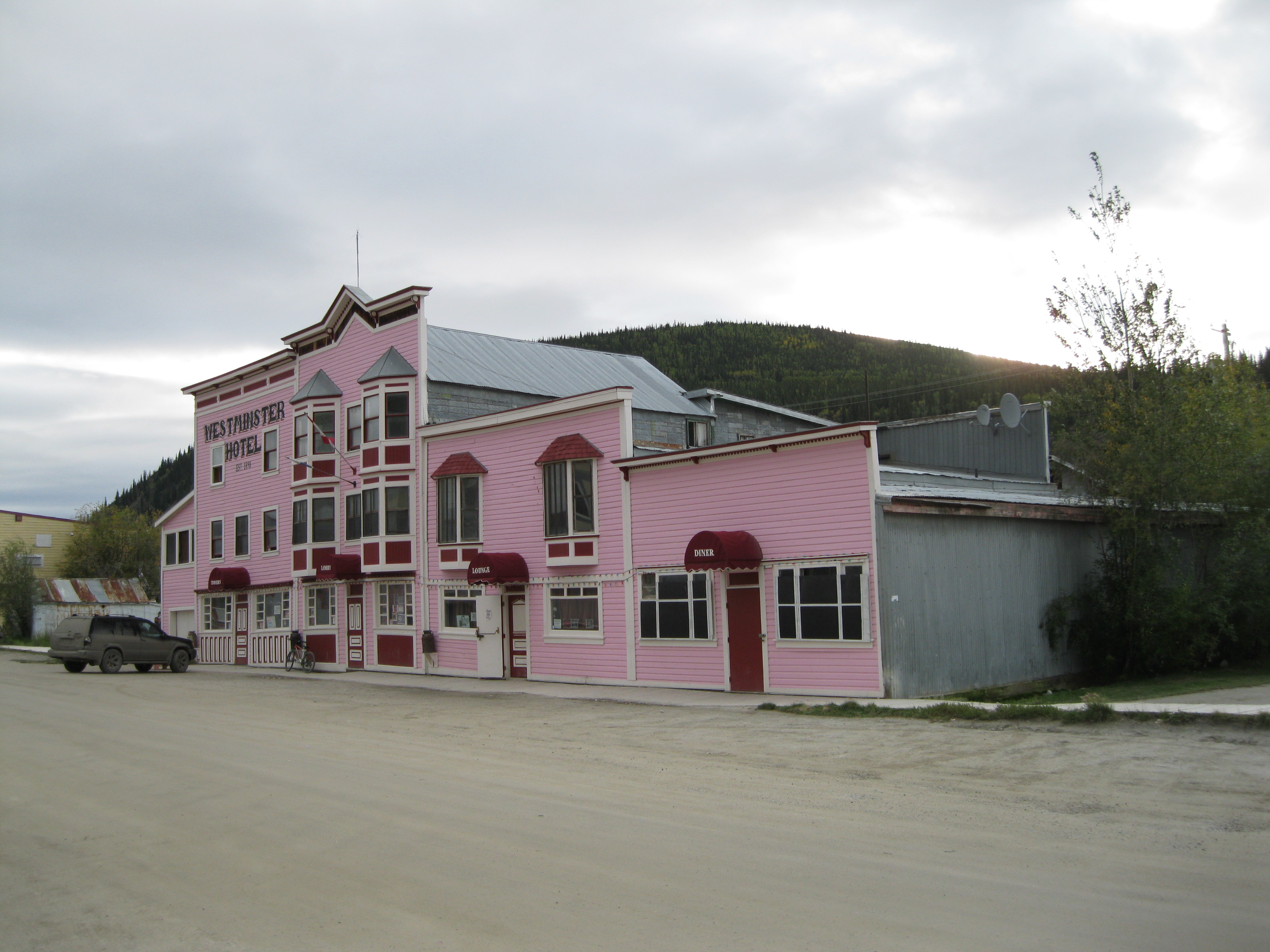Dawson City is a very nice little town in the Yukon. It’s an authentic old western town and there is a lot to do. In its heyday during the Klondike Gold Rush around the turn of the 20th century it was the biggest town in North America west of Winnipeg and north of San Francisco. The core of Dawson City was constructed during this period of time at the base of the Yukon and Klondike Rivers. The town is bounded by these two rivers and he surrounding mountains. Most of the buildings are in the style of boomtown and frontier architecture with of Victorian and Edwardian features. The street grid was set out in 1897-98 and the townscape features historic building from 1896-1910.
Being in Dawson City is a bit like stepping back in time as it’s genuinely got a feel of a western town from the turn of the 20th century. Having a walk around town is really interesting as you will see a lot of old western style buildings with plenty of bright colours. There are strict building by-laws about what type of structures you are allowed to build as it has to conform with the historic appearance of the city. This is good so Dawson will keep its unique look and feel. Taking a stroll around town doesn’t really take long as it is small but you can take you time, have a walk along the river, check out some of the shops or cafés.
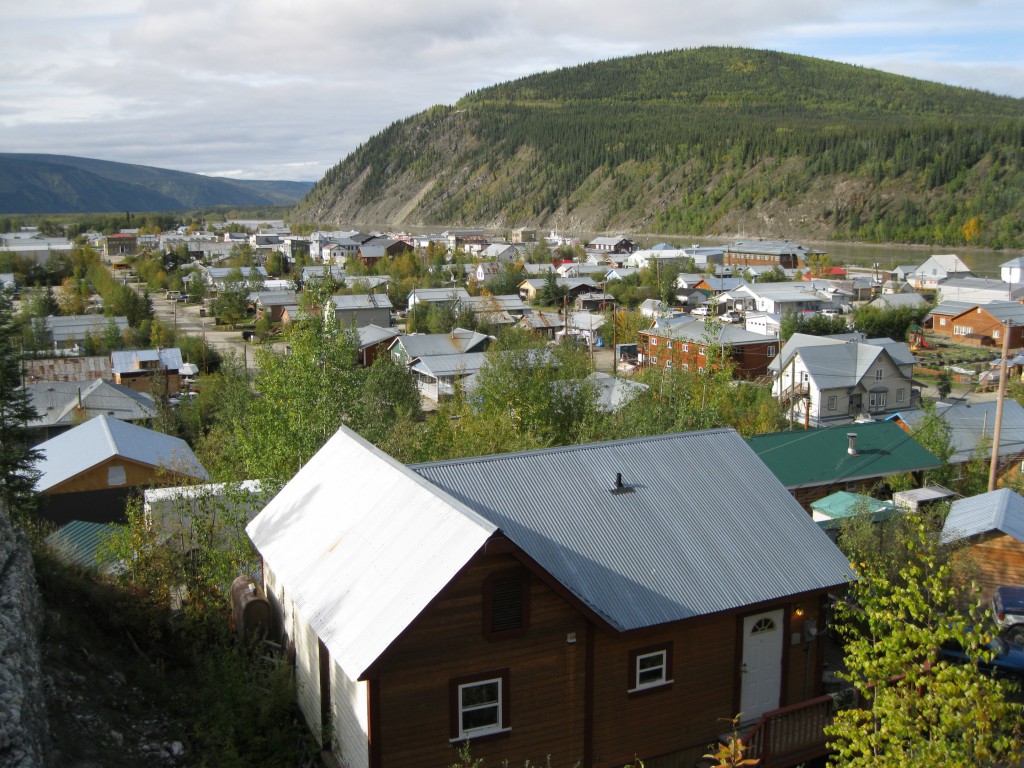
If you have any questions you can always pay a visit to the Visitor Centre. They are really friendly, can help you out and give you some advice on what to do in town.
A really cool place is the Alchemy Café which in itself is an interesting building. At the Alchemy Café you can get a really cool cup of coffee. It’s a bit pricy at 8 CAD but is well worth it. It’s called the bullet proof coffee and contains two shots of espresso, coconut cream, coconut oil, raw cacao and maple syrup. Good stuff.
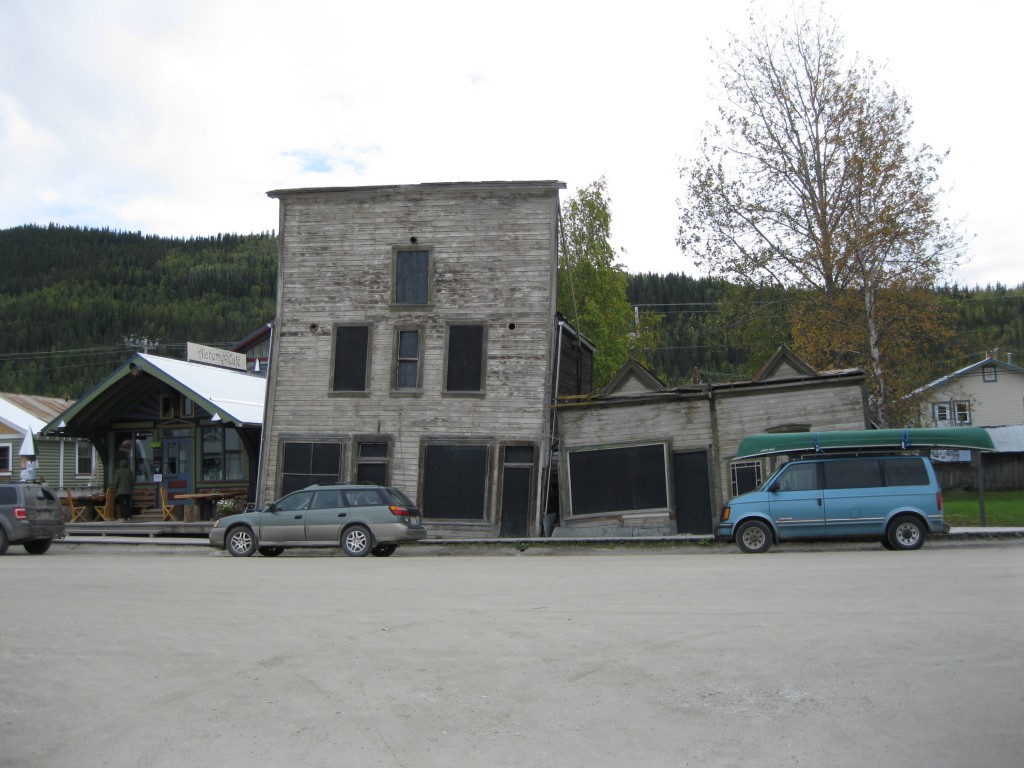
There are a couple of crooked buildings and this particular stance is an early sign of sudden melting permafrost. It’s similar to a forest where you have trees tilting which is due to the same reason. To the right of the Alchemy Café you will see an old crooked building known as the Third Avenue Hotel. The structure was built during the Gold Rush and was placed on continuously frozen ground. The heat from the buildings would melt the permafrost at a different rate and depending on how they lean it could save them. It could also result in the structure sliding down in the mud like with the Third Avenue Hotel. It was built in 1899 with the top façade added in 1902. The two smaller buildings were housed by a photographer studio from 1907 to 1933. The last tenants left in 1944. Several buildings have been restored in Dawson but the Third Avenue Hotel has been left for visitors to see what a tough climate can do.
The streets of town are not really paved which gives it a unique feel along with the wooden pavements giving it a real western touch. If you take a walk uphill in town you will get a very good view of the city which is a great photo opportunity. There are several interesting establishments in town which you can visit for lunch, dinner, a drink or a show.
Dawson is such a cool town as you will see all sorts of characters and sometimes in unusual contexts. You can go to a really trendy café and see a big bearded fellow with tattoos and piercing but also ladies all dressed up in fancy outfits as well. So there is a nice and funny mix of people.
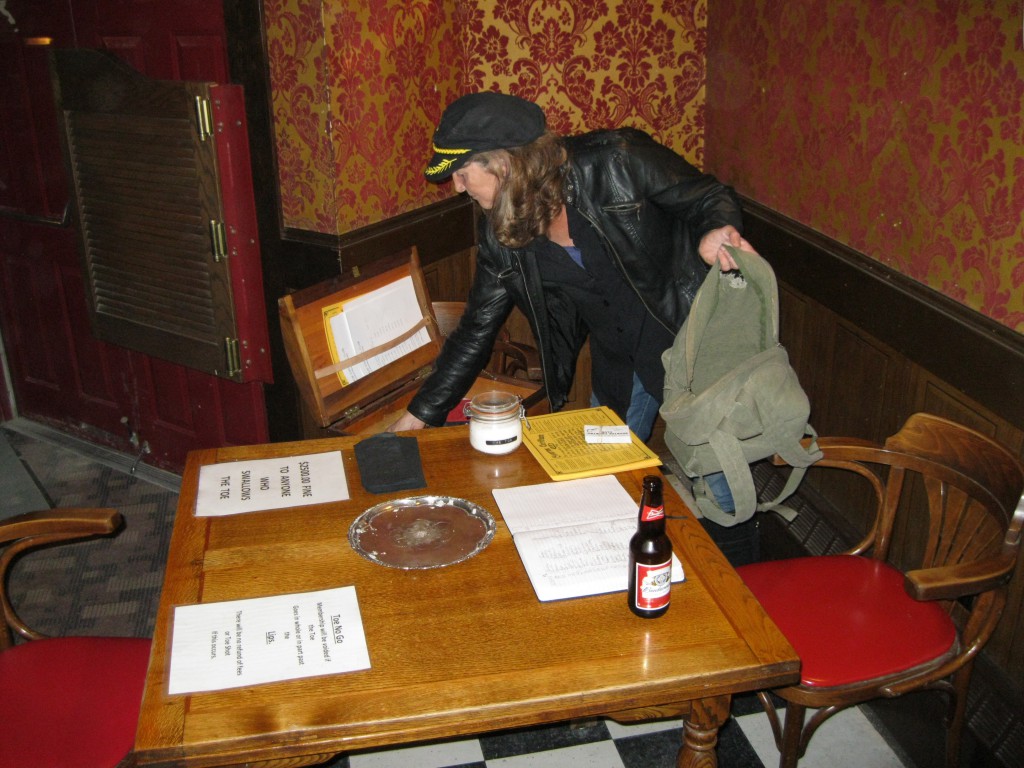
The most unique thing you can do is the sourtoe shot at the Downtown Hotel which is located at Second Avenue. This takes place from 21:00 to 23:00. You have to order a shot of minimum 40% alcohol at the bar, and the toe, which have been lost to frost bite, will be placed in your drink. The person in charge of the proceedings is called the Toe Captain who will based at a table at the entrance of the establishment especially for this event. You have to drink the shot with the toe in it but only with the toe touching your lips. It has to touch your lips before you will get the official Sourtoe Certificate and become a member of the club. On the certificate it says that you in the presence of witnesses drank an authentic Sourtoe Cocktail, followed in the footsteps of Captain River Rat, that you have proven to be a person capable of almost anything and therefore you’re fully entitled to bear the certificate with such rights and privileges as may at any drunken moment be decided upon. This is the official certificate for being “bad ass”.
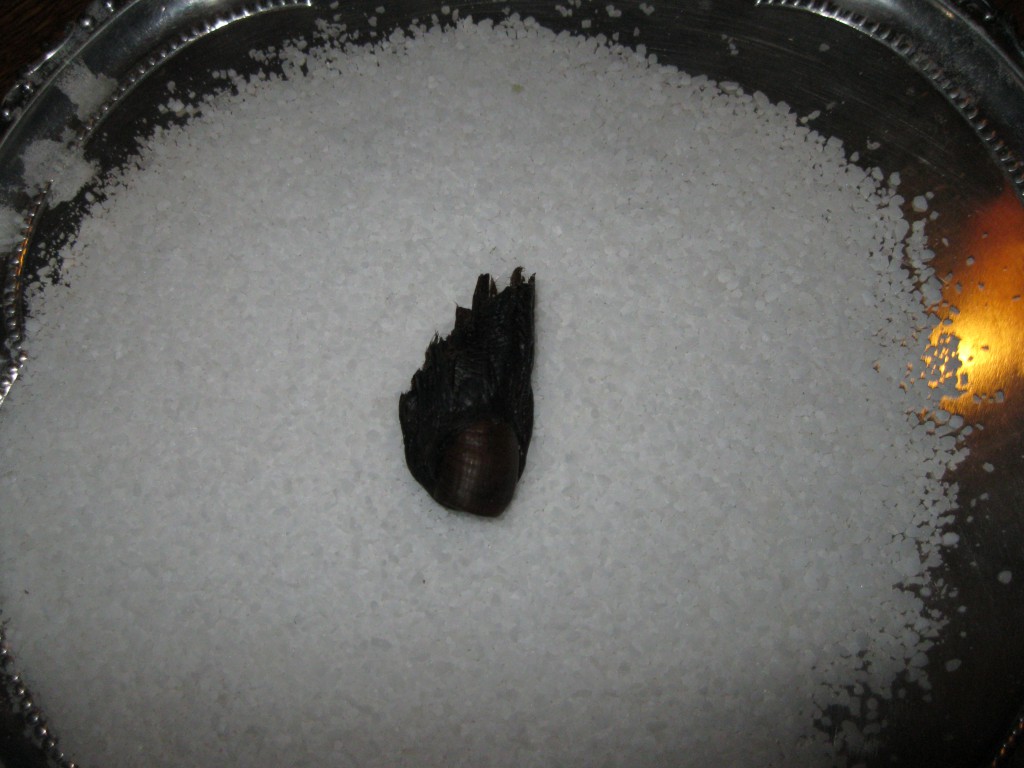
People donate their toes, if they are lost to frostbite, to the Downtown Hotel to be used for this shot. Currently there is only one toe left. In 2014 there was a person who turned up for the toe shot and swallowed the toe. The penalty at the time for doing that was 500 CAD and he just paid the fine and left. Therefore it has been raised to 2,500 CAD. This is great fun and a lot of people may turn up for the event. Therefore it is recommended that you arrive early. There’s a really great Western feel at the Downtown Hotel as there’s a piano player playing the style of music you hear in the saloons in the old classic westerns.
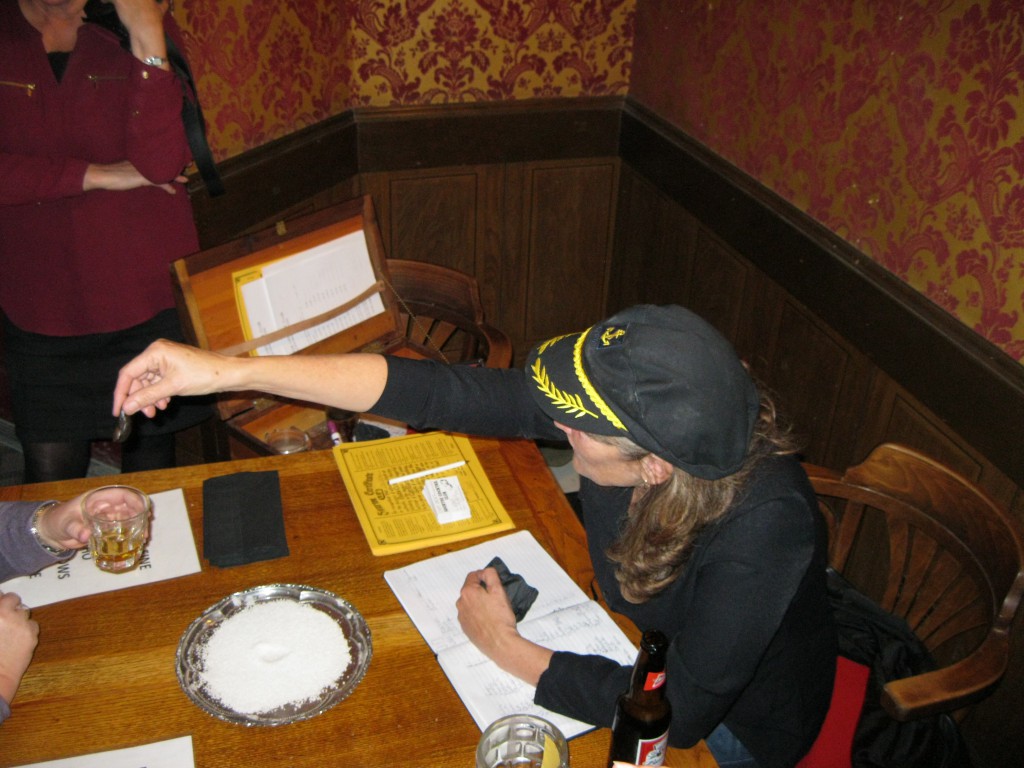
The Downtown Hotel is also really good for people watching but so are other places such as the Westminster Hotel at Third Avenue which is also known as the Pit. You will know why it’s got this nickname when you pay it a visit. A cool place with all sorts of. It’s certainly got its charm with pretty kitchy interior, but it is also known for having great live music on Friday and Saturday nights. Checking out the Westminster Hotel is an absolute must when experiencing the very authentic Dawson.
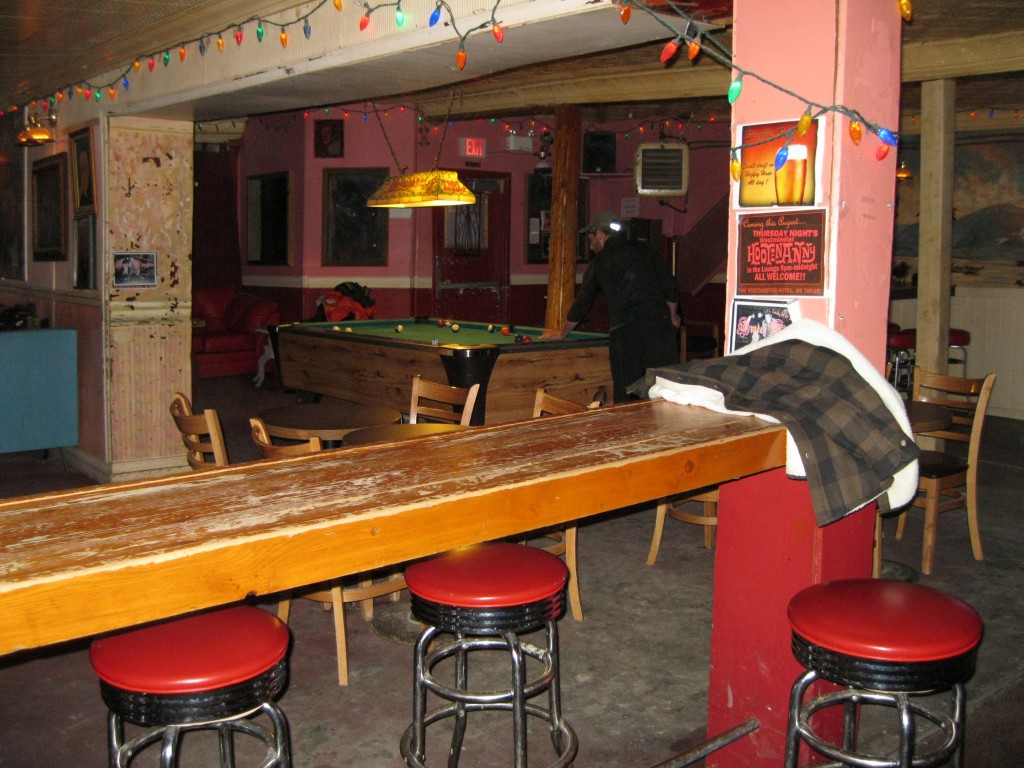
Another property with a great history is the inn called Bombay Peggy’s, which is a very neat Victorian hotel with a cosy little bar as well. The property was built in 1900, was originally located by the river at the corner of Front and Albert Street and was acquired and relocated in 1998. At the time the building was really worn down and some of it was all rotten. Therefore it had to be restored which took 14 months. Moving the structure was actually fairly easy as it was raised and placed on a wheeled platform and transported down to its current address at Second Avenue and Princess Street. The first owners were involved in the mining industry and subsequent owners would use it as a family residence and boarding house. One of the most noticeable owners was Margaret Vera Dorval also known as Bombay Peggy and who ran the local whorehouse and bootlegging business from when she took over the property in the early 1940s. Bombay Peggy’s Inn is really cosy and has a nice atmosphere due to the classy interior.
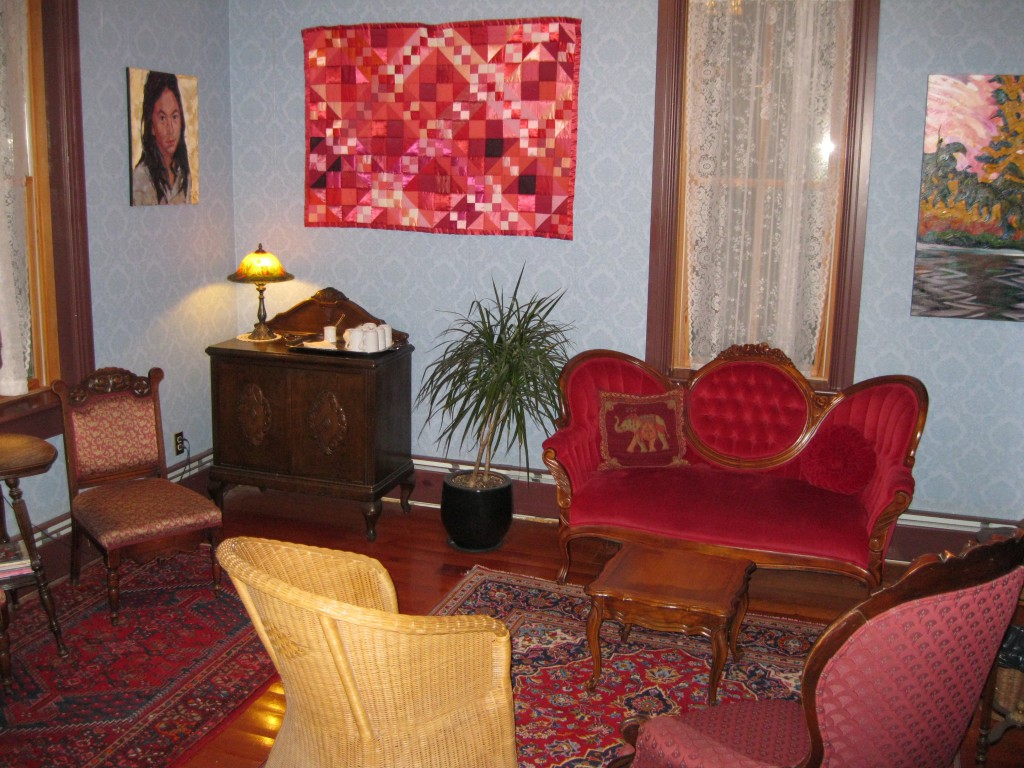
The Yukon Hotel on Front Street was a typical commercial structure of the Klondike Gold Rush area. It was built in 1898 initially and known as the Binet Block at the time. It was rented for Government offices and became a hotel in 1900 under different names until 1957. Notable features are the boomtown style architecture with the three storey false front.
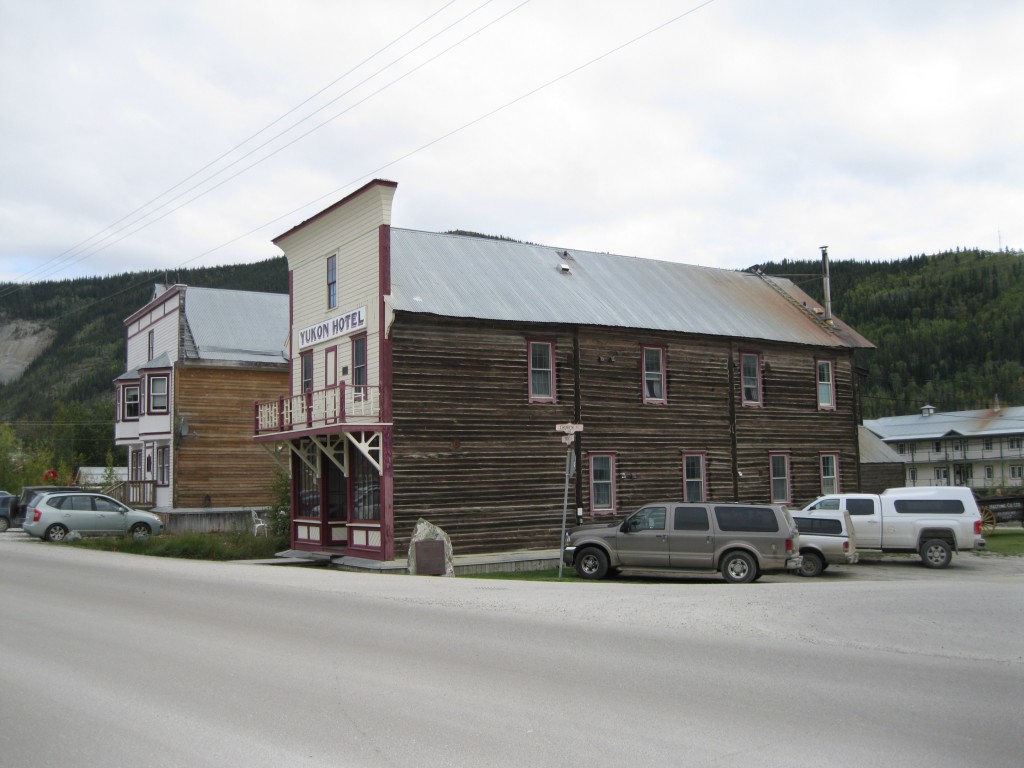
Diamond Tooth Gerties is a casino at Fourth Avenue with Klondike areas style entertainment such as dancing girls. The establishment is owned by the Klondike Visitors Association and all proceeds are re-invested in the community. This is definitely worth a visit
Taking a walking along the Yukon River just opposite Front Street is really nice. You will have great views of the river, the surrounding mountains and the city. Down at the river you will also find the riverboat SS Keno. This was the smallest of its kind to sail the Yukon River. The largest is based in Whitehorse which is called the SS Klondike. You can walk aboard and have a look around. It was constructed in 1922 and transported silver, zinc and lead ore from mines in the Mayo district to the confluence of the Yukon and Stewart Rivers to Stewart City. During the Klondike Gold Rush the river traffic boomed and around 60 riverboats, also known as sternwheelers, operated on the Yukon River.
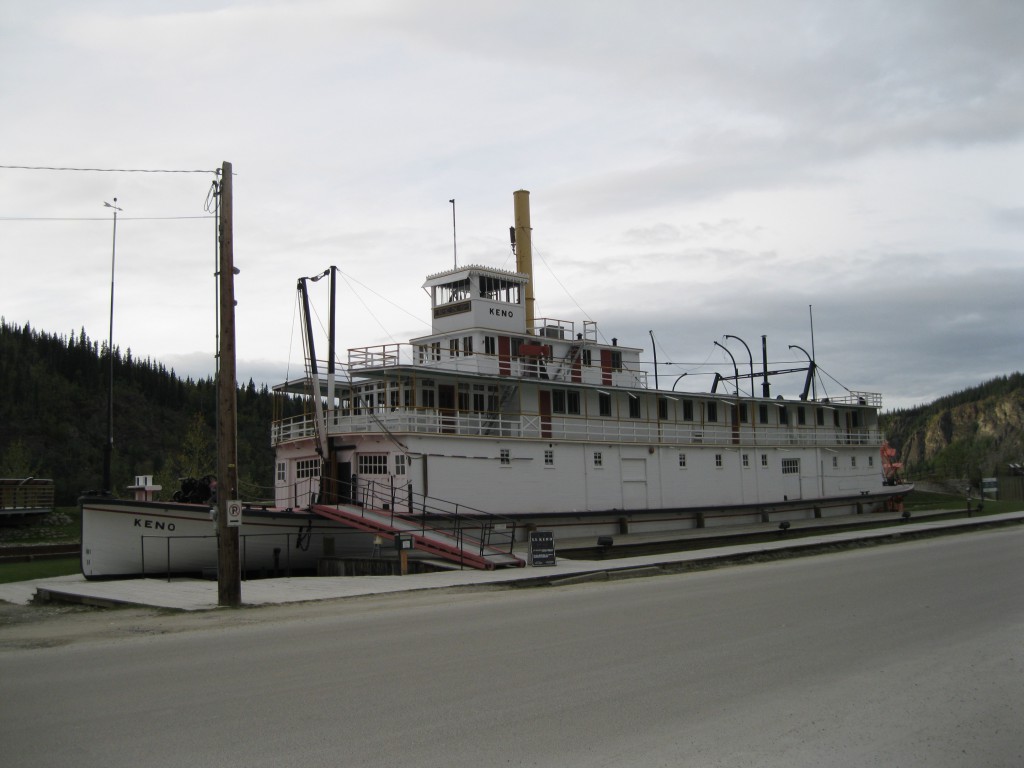
There are several monuments around town paying tribute to the past and the heyday of Dawson. One is called “Tribute to the Miner” which is dedicated to the gold miners from the past to the present and the future. Mind you that there are still active gold mines in the regions. Back in 1896 gold was discovered at Rabbit Creek, which would later be known as Bonanza Creek, by Skookum Jim, Geroge Carmack and Dawson Charlie on advice from fellow prospector Robert Henderson. This sparked the great Klondike Gold Rush in 1898 and Dawson City was born. After the Bonanza Creek gold discovery, prospectors from all along the Yukon River tributaries staked claims on Bonanza and Eldorado Creeks. Some of those men had already been prospecting on the Indian River drainage and Hunker River with pretty satisfactory results. The word spread of the discovery of gold and thousands of people who wanted to be miners came and staked claims on any open ground they could find including half way up the valley slopes. Some of these turned out to be the richest of the regions. The trick was to follow the ancient stream beds where placer gold was lodged in the gravel. The goldbearing creeks of the region would generally radiate out from the King Solomon Dome and many miners spend all the energy on digging into what they thought was a core of pure gold. The source of gold is still a theory by geologists and the search of the mother lode continues.

Most of the people who came to Klondike knew nothing about mining and didn’t know how small their chances would be of making it big or even make a living out of it. In the 1890s there was a recession and therefore this was an opportunity for adventure and wealth.
The gold pans were essential to the miners for testing the ground, to make sure that their techniques were effective and to sort the gold at the end of the process. Gravel and gold were brought to the surface by windlass and shovelled into a sluice to wash out the gold. Initially gold mining was very labour costly until more efficient methods were found. Later steam assisted techniques were developed as the gold was deep in the ground. A self-dumping mechanism was developed in Klondike.
The methods used today haven’t changed much. To find gold they look for sedimentary deposits, currents and ancient steams where erosion have moved rocks downstream and left gold behind. The picks and shovels have been replaced by bulldozers, excavators, trucks and pumps. There are regulations in place which make sure that the ground is contoured and to make sure that there are no unrestricted flows of sediment into the rivers and streams. The challenge today is to extract the gold without destroying the landscape. The areas around Dawson were mined before environmental regulations were put into place.
The Yukon River is the third longest river in North America being 3,185 km (1,980 miles) long. It drains a massive basin of more than 840,000 square kilometres (324,326 square miles) which is 25% larger than the size of Alberta or Texas. The richness of life in the Yukon River has always attracted people. The native people spent most of the summer and early fall along the banks fishing, hunting and gathering edible plants. Traders and prospectors arrived in the mid-1800s building post and settlements. Sternwheelers travelled all the way from the Bering Sea to Whitehorse as well.
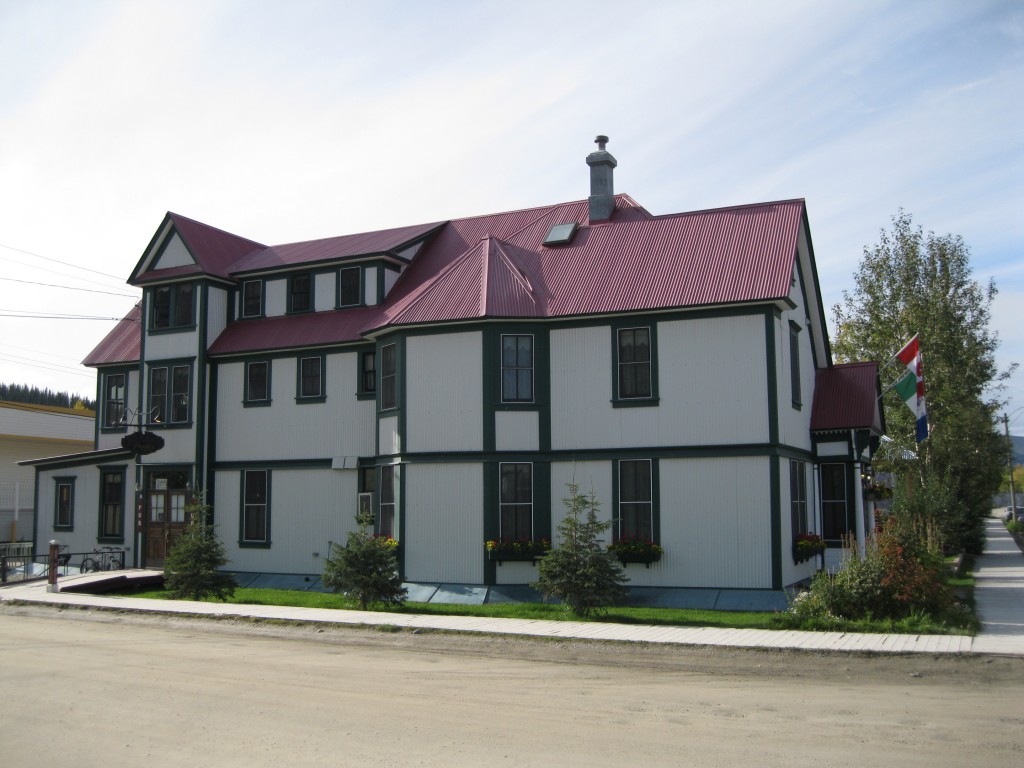
In 1887 it was decided by the Federal Government to direct the Geological and National History Survey of Canada to map the Yukon District of the North West Territory as the development in placer gold mining were attracting an increasing number of miners and prospectors. The assignment was to survey the boundary between the Yukon and Alaska. Geologist George Dawson was in charge of the Yukon expedition and was joined by surveyor William Ogilvie. Dawson travelled into the remote and wild country of Yukon to survey, study and record the geology, botany, geography, native language and legends. In spite of him struggling with a bad health most of his life, he did more than anybody else to map the Canadian West. He never saw Dawson City but ten years prior to the Gold Rush he predicted the discovery of gold at the Yukon River Basin. Williams Ogilvie surveyed the town site in 1897 and it was his suggestion that the town was named in honour of George Dawson. The name Dawson City was incorporated on 9 January 1902.
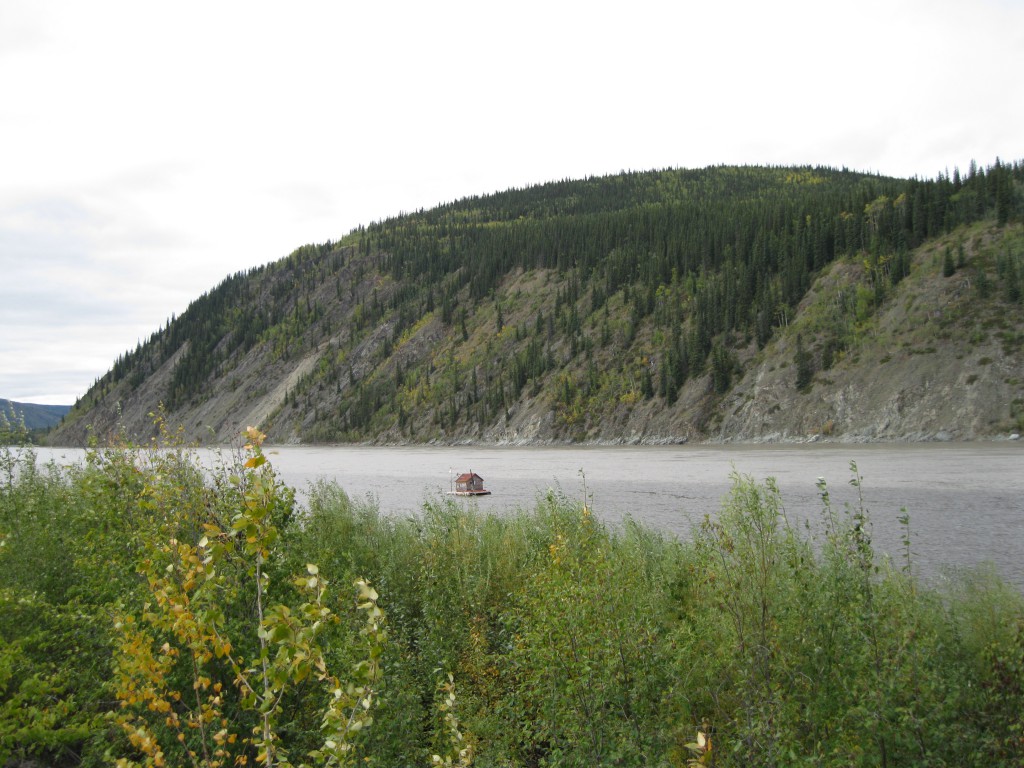
Dawson has been flooded 22 times since the townsite was established in 1896. Many of them were minor but 5 of the floodings made severe damages on the town. On the Yukon River the floods happen when spring appears and blocks of ice pile up and block the narrow or shallow parts of the river. Water builds up behind the ice dams and cause the floods. The worst flooding happened in 1979 where ice jams in the Yukon, Indian and Klondike rivers made the water overflow the makeshift dikes placed at Front Street. The floods went all the way up to 6th Avenue and were 2 metres (6.6 ft) deep in some areas. Even though the water only flowed for an hour at Front Street it caused massive damages. 250 claims were filed to the government disaster program and it took years to repair. A new 2 metre (6.6 ft) tall dike was completed in 1987 and there’s been no floods since.
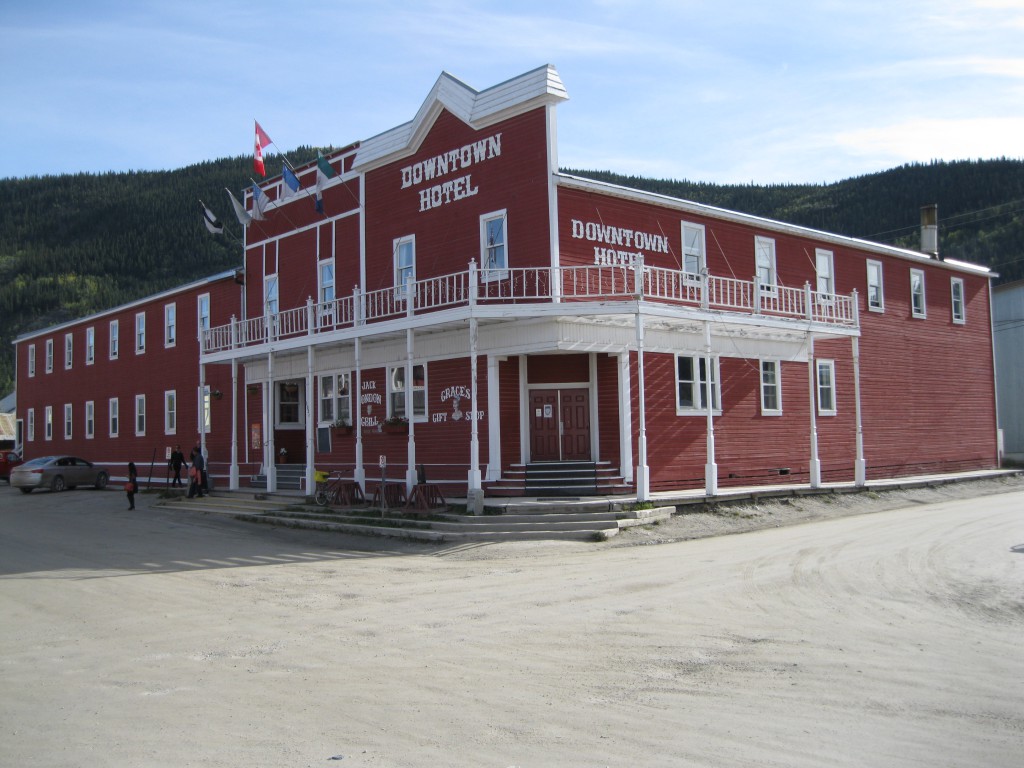
Due to the amount of gold rushers who had arrived to the area it was decided in September 1896 that Fort Herchmer should be built for the North West Mounted Police (NWMP) at a site close to Dawson City. The construction started in the summer the following year. The Mounties would maintain law and order in Dawson and the goldfields and patrol along the Yukon River. In 1898 Yukon was recognised as a territory and federal administration was needed. Several public buildings were constructed by 1899 such as post house barracks, officers’ quarters, a hospital, quartermaster’s store, offices and 58 jail cells. It was now the administrative centre for Northern Yukon. More impressive buildings were constructed from 1901 to 1902 as well. Among them were the Commissioner’s residence and the Territorial Court House facing the Yukon River. The latter was built in the style of Neoclassical Revival. As the population of would become smaller after the Gold Rush, the need for judicial services decreased and the courts were moved to the Territorial Administration Building on 5th Avenue in 1910. The NWMP took over the court house after their headquarters burnt down in 1914 and remained in their hands until the St. Mary’s Hospital burnt down in 1950 and it would be converted into a hospital.
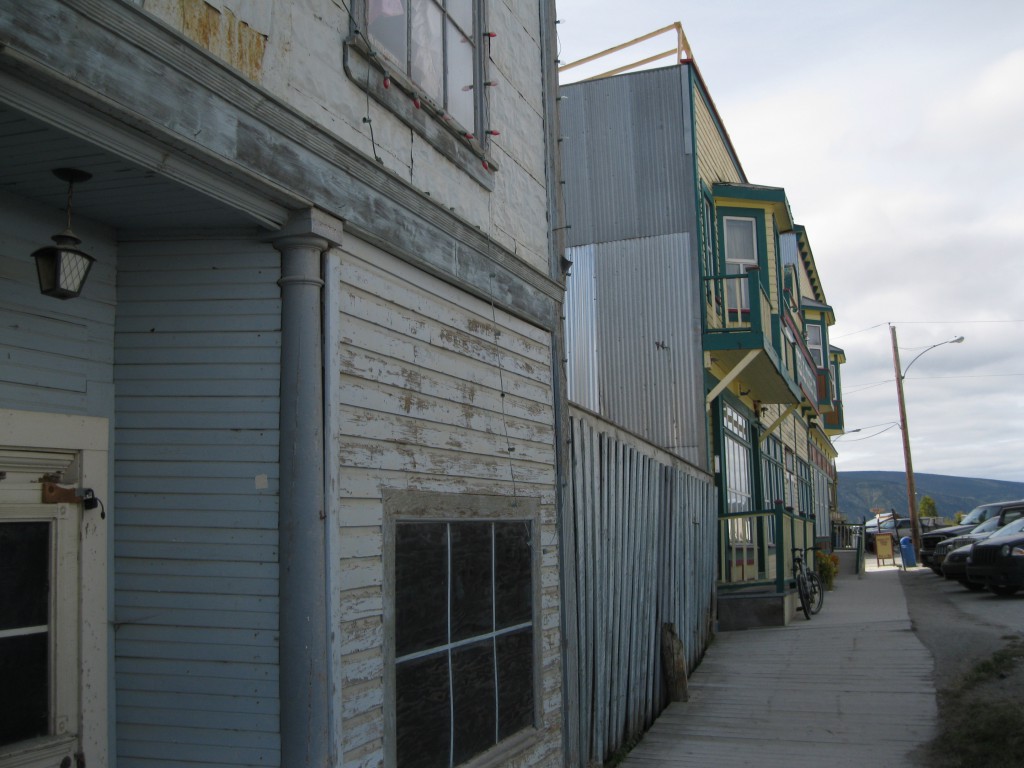
On Front Street, the Royal Canadian Mounted Police is based. They have a rich history in the region. One of the interesting stories from the past is about the Lost Patrol. From 1904 to 1921 the North West Mounted Police, as it was called back then, would deliver post and dispatches as an annual tradition in connection with a patrol from Dawson City to Fort McPherson in the Northwest Territories about 765 km (475 miles) away. In December 2010 the commissioner for the North West Mounted Police asked that the trip went from Fort McPherson to Dawson City as opposed to the other way around. The trip was led by Inspector Francis J. Fitzgerald. They left Fort McPherson on 21 December but never arrived at Dawson City. This became known as the “Lost Patrol”. Native guide Esau George was hired to lead them on the first leg of the trip. Fitzgerald let George go after he had done his part and trusted Special Constable Sam Carter to guide on the remaining part.

By 12 January 2011 the patrol was lost as Carter was unable to find Forrest Creek which would lead them to Dawson City. They tried returning to Fort McPherson but they were starving, frostbitten and could only hike a few kilometres a day. They ate 10 out of the 15 sled dogs they had brought with them. When the Fitzgerald patrol was more than a month late in reaching Dawson, a search patrol was sent out to find them on 28 February 2011. On 21 March 2011 George Kinney and Richard Taylor of the Fitzgerald Patrol were found dead. The former of starvation and the letter of a self-inflicted gunshot to his head. The others left for help and had died due to the cold and lack of food only 40 km (25 miles) from Fort McPherson. There were several reasons for the failure of the patrol. Carter had only travelled the route once before. After getting lost they spent too much time on finding a proper route, they didn’t have sufficient food and the temperatures went down to -43 degrees Celsius (-45 degrees Fahrenheit) to -51 degrees Celsius (-60 degrees Fahrenheit). Patrols were made until 1921 but after the Lost Patrol, a native guide was always hired and cabins and caches ware established along the trail in case of food shortages. Furthermore the Forrest Creek Trail was clearly marked as well.
